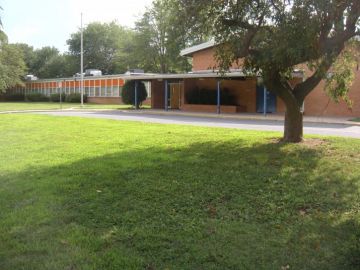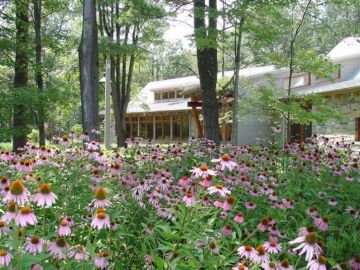The Willow School


Landscape Performance Benefits
Environmental
-
Reduces potable water consumption by 375,000 gallons per year by using harvested rainwater to flush school toilets. This saves $2,230 annually.
-
Treats and infiltrates 380,000 gallons of wastewater annually with a system that includes constructed wetlands and a sand filter.
Social
-
Engages all 250 students in gardening throughout the year. An estimated 1% of the school’s food comes from the school vegetable gardens and adjacent fruit trees.
-
Recycles an average of 280lbs of organic waste each month as compost for the vegetable gardens. Nearly all students surveyed always compost organic waste at school.
-
Engages all 250 students in an educational curriculum that includes landscape processes and ethics. When a sample of students were asked to list environmentally-friendly features of green buildings, 82% listed landscape features such as rainwater harvesting, composting, vegetable gardens, or wetlands. When asked about stormwater, 86% of students knew that asphalt and concrete were not the best ground surfaces for managing stormwater around a building.
Other Examples
Bannockburn Pollinator Gardens
Brent Elementary Schoolyard Greening: Phase 1
Glenstone Landscape
Knollwood Life Retirement Green Infrastructure
New York Times Building, Lobby Garden
Sidwell Friends Middle School
At a Glance
-
Designer:
Back to Nature -
Location:
1150 Pottersville Road Gladstone, New Jersey 07934 -
Size:
34 acres -
Project Type:
School/University -
Climate Zone:
Humid continental -
Budget:
$5 million -
Former Land Use:
Institutional -
Completion Date:
2003
